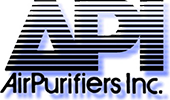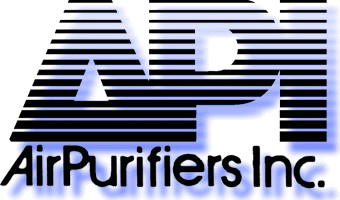Air Purifiers Inc. provides exhaust and filtration systems for environments where protection against viruses is essential, including dental clinics, healthcare, and laboratories.
Aerosol Extraction in Dentist Clinics
Aerosol Generating Procedures create potentially dangerous, submicronic particles that can linger in the air for extended periods of time, posing a threat to health care workers and patients.
Transmission of infection or disease during aerosol-generating processes such as high-speed drilling has been an increasing concern to the dental profession. The reason is the risk of direct contact with saliva or blood, contact with contaminated instruments or surfaces that have been improperly sterilized, or respiratory fluids that may become aerosols during operative dentistry.
Dental clinics might pose risks for both patients and dental healthcare workers. The aerosols and splatter produced during dental procedures have the potential to spread the infection to both dental personnel and patients. Transmission of microorganisms may occur by direct contact with contaminated tissues or instruments. Also, direct contact with saliva, blood or aerosol particles from saliva and respiratory fluids might transmit infection.
In infection control as well as in occupational health aerosols are important considerations. Aerosols may carry potentially hazardous microbes, viruses, allergens, and other toxic substances that may harm the dental operator, patient, and dental assistant by causing infections. The propelling force of a high-speed dental drill, for example, being used in combination with a water spray, generate airborne particles that can be derived from blood, tooth debris, dental plaque, saliva, restorative materials, and more.

Reducing the risk of contamination:
Engineering controls are favored over administrative and personal protective equipment (PPE) for controlling existing worker exposures in the workplace because they are designed to remove the hazard at the source before it comes in contact with the worker. Well designed engineering controls can be highly effective in protecting workers and will typically be independent of worker interactions to provide this high level of protection. The initial cost of engineering controls can be higher than the cost of administrative controls or PPE, but over the longer term, operating costs are frequently lower, and in some instances, can provide cost savings in other areas of the process.


SOURCE CAPTURE is the most effective and energy-efficient method of controlling Airborne pollutants including aerosols
Types of Source Capture Solutions:
- Exhaust Safely Outdoors
- Exhaust HEPA Filtered Air Outdoors
- Recirculate HEPA Filtered Air
- Portable mobile local source extraction systems consisting of a fan, filter and fume extractor in a single unit
Air Purifiers Inc. approach:
- Utilize a High-Volume Extractor (HVE) system with a high capture hood and articulating an extraction arm to capture a high percentage of aerosol near the source.
- Where possible, exhaust the collected and diluted aerosol safely out of the building.
- When necessary, filter the aerosol using a medical-grade HEPA filter (H13/H14) before exhausting.
- If the exhaust is not possible, filter the aerosol using a medical-grade HEPA filter (H13/H14) and recirculate within the room.

